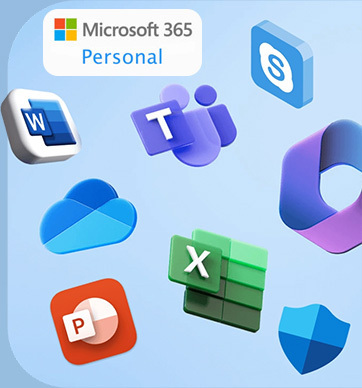Theolin Moodley: Senior Product Manager at Vox
The architecture and topology of an Access Point Name (APN), once developed, had gained traction when CIOs and IT managers were seeking a mobile data solution for a distributed or dispersed workforce. Primarily, sales personnel or consultants that spent a substantial amount of time away from company campuses or offices, were the internal clients that most needed remote connectivity to the company’s network – especially while travelling for business.
A mobile APN is a gateway between a 3G/LTE mobile network and the business’s own computer network, accessing the public internet or private Virtual Private Network (VPN). It is a unique identifier that allows a connection to the company’s network via a Mobile Network Operator’s (MNO) 3G/LTE/5G network.
Since its introduction to the market, corporate mobile APNs proved to be most effective for the highly mobile teams within organisations, it fast became the tried and tested go-to solution for businesses that sought a quick enabler for all employees to work from home/anywhere when the need arose.
APNs deliver a secure connection that creates a private network on a mobile device, protecting information and linking multiple devices together. It enables companies to manage multiple SIM cards each delivering data connectivity through a private APN to remote workers. Furthermore, companies can set usage caps for employees, and view bandwidth on an application level – making it easy to discern whether the user is accessing social networks or streaming content for pure entertainment value or accessing work-related sites that lend itself to actual productivity. Features are option dependent, however.
Ultimately, a mobile APN can significantly reduce data spend in the organisation as management has an integrated reporting environment with a universal view of how employees use their mobile data. The ability to allocate and re-allocate data comes pretty standard too. These attributes of corporate APN solutions provide complete budgetary control that makes sense, especially in the current tough economic climate when businesses are looking to reduce connectivity costs. In addition, businesses are also trying to use recent lessons learned to better equip their organisations for purposes of hybrid working and to provide sustained stability should another disaster or crisis disrupts normal operations in future.
In the absence of the control that APN solutions offer, many businesses had to deal with mobile data costs that skyrocketed while staff worked remotely. The extent of the bill shock related to data purchases may have easily doubled, or even trebled or more in some cases. It was a necessary evil though, as keeping employees connected meant keeping them working and it goes without saying that business continuity is a business imperative.
Halting business operations under any circumstance could lead to substantial losses for any business with a far-reaching impact on suppliers, partners, employees and customers/clients alike. Stable, secure and controlled access to an organisation’s network is crucial and an APN is a formidable choice of the solution both as a primary or complementary remote connectivity option. Within the APN architecture and topology, there is room for customisation allowing businesses a range of product types and features that may be best suited for their needs.
There a two main types of APN solutions, Shared and Private or Corporate APNs. As the name suggests, the Shared APN makes use of Shared Infrastructure. One massive data pipe where all the traffic flows into.
With a standard Shared APN solution, users get access to the world wide web without any restrictions meaning that businesses cannot prevent their employees from accessing social media and content streaming platforms without deliberately installing additional firewalls. A key feature of the Shared APN is the ability to aggregate or pool together data from more than one Mobile Network Operator under one data bundle. The clear benefit is ubiquitous coverage to ensure end users can work from virtually anywhere wherever the signal strength is strongest.
And then there is the Private APN solution to consider. This is more expensive when compared to a Shared APN as the traffic is inherently more secure as the data traffic does not transverse across the public internet unless otherwise requested. In addition, your service provider in conjunction with the MNO should carve out a dedicated pipe or NNI (network-to-network interface) that only carries data traffic specific to a corporate APN client. The primary use case for this type of solution would be access to a client’s corporate intranet.
Another key benefit of this solution is that organisations can set up policies on the firewall level to ensure that, for example, employees only access certain URLs or websites such as business-based applications such as Outlook, Office 365 or Microsoft Teams while other users could have access to other additional sites.
In addition to APNs delivering advantages to a hybrid workforce, it is in Internet of Things (IoT) and Machine to Machine (M2M) rooted applications where its true potential can be harnessed. These edge devices use SIM cards and generate a small amount of data. But it is in the volume where APN comes into its own and provides organisations with an effective way of managing the thousands of IoT and M2M solutions on its network. A perfect example of this is the M2M SIMs that are inserted in Point of Sale (PoS) devices that enable millions of people to conduct their payment transactions, purchase airtime or electricity even in the remotest of areas in our country.
The modern workforce has undoubtedly adopted new ways of working over the past 2 years or so and arguably many of the changes experienced have been positive for individuals and businesses, productivity, time management and, in some ways, for the planet. Clearly, APN solutions played a significant enablement role in ensuring business continuity in a time of crisis. There is still significant value to be gained by organisations who use APN solutions as a connectivity offering for their distributed workforce, to closely manage data allocations, to manage increasingly complex real estate of IoT devices or are looking to be better prepared for whatever disruption may come next.














